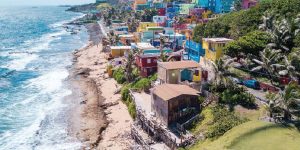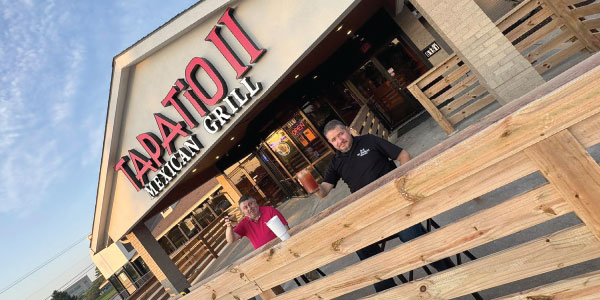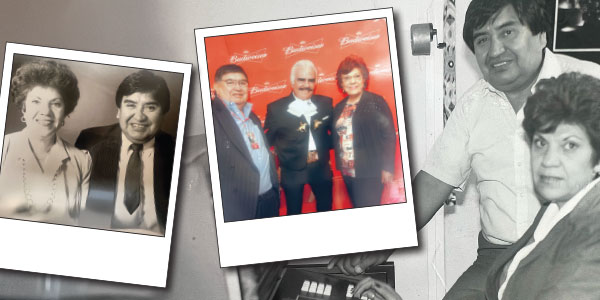
By Tom Sawyer
Welcome tourists! In this edition, we are talking about the capital of our dear neighboring island Cuba, which in addition to being the most populated city is also the main tourist center of the country. We refer to Havana, Cuba. Founded in 1514 by conquistador Panfilo Narvaez, it has a population of over 2.2 million inhabitants.
Havana has a historical, architectural and cultural heritage of aborigines, Africans and Europeans. Due to this mixture of cultures, the city is the main point of interest for tourists who decide to visit Cuba. In 1982, UNESCO declared the historic center of Havana a Historical Heritage of Humanity, one of the most preserved in all of Latin America.
Round-trip flights from Kansas to Havana have an average cost of $350, all with at least one layover. The best way to move around the city is by taxi. There are different types of taxis such as the restored old American cars, the coconut taxis (motorcycles with yellow roof), the bicycle taxis, which are bicycles with adapted roof among others; remember to agree on the fare of your trip before starting it. Buses are not recommended as they have long lines and are quite slow. Lodging in Havana is divided into pensions, hostels and hotels, with an average cost in hostels and pensions of $35 per night, and in 3-star hotels from $50 a night and in 5-star hotels from $200 per night. Cuban cuisine is vast and is a mixture of different cultures of the world. Its most famous dish is “ropa vieja”, which is shredded meat in a sauce prepared with different vegetables and spices and this is accompanied by black beans and rice. Another of the most famous dishes is the “moro y cristiano,” which is black beans accompanied by white rice; in some places they can give them to you separated and in others scrambled. Average cost of a meal in Havana is $10.
The places you should include in your next visit to Havana are the following:
Revolution Square. Place of the tribute to the leaders of the Cuban revolution. In this site, you can find a statue of Jose Marti, father of Cuban independence, in addition to images of Che Guevara and Camilo Cienfuegos, architects of the revolution with Fidel Castro and Raul Castro.
National Capitol of Cuba. It is undoubtedly the most imposing building in the city. Inspired by the Washington capitol, the Pantheon in Paris and the Basilica of St. Peter in Rome, this capitol was built in 1929 to house the two chambers of the legislative congress of the Republic of Cuba. Now open to the public to become one of the most visited sites in the city for the beauty and grandeur of its architecture. The entrance fee is $3 without a tour guide, and $4 with guide.
Cathedral of Havana. Declared a World Heritage Site by UNESCO, this episcopal center is located in the heart of Old Havana, the oldest place in the city. The cathedral is of Baroque style and has black and white marble floor. Inside there are several pieces of art, including sculptures and paintings by famous European artists.
Museum of the Revolution. It gathers a wide collection of objects and documents of the Cuban revolution era. This beautiful building was built between 1909 and 1920 to serve as the Presidential Palace. In 1974, it became the Museum of the Revolution. It has an exhibition of more than 9,000 pieces of different stages of both the independence of Cuba and the Revolution of Cuba. These pieces are divided into 30 different rooms, each of them from a different stage of Cuban history. Entrance fee is $8 and includes entrance to the building next door where the Granma yacht is sheltered. On that yacht, Castro and his compatriots arrived from Mexico to begin the revolution.
Malecón de La Habana. It is the point that separates Havana from the Atlantic Ocean. A good place to go for a walk, to enjoy the sea breeze while enjoying an ice cream or a tukola (drink similar to Coca Cola), you can find fishermen working and children jumping between the rocks or bathing in the sea. From this point, you can see several of the most important buildings in the city, as well as the castles and fortresses that surround the entire city.
The official currency of Cuba is the Cuban Convertible Peso CUC, which equals each CUC to 1 U.S. dollar, but you also have to pay a tax of 10%, so you must assess whether before converting your cash to CUC you transfer it to the Canadian dollar, euro, sterling or Swiss francs since these do not have a tax lien. Many American debit and credit cards are not accepted in the city, so you have to find out if your cards are valid there or not. Lastly, phone and Internet service is quite precarious; so take advantage of it to enjoy a few days without these technologies.
Without more for the moment, I say goodbye. Greetings and good trip!
___________________________________________________________________________
Conoce La Habana
Bienvenidos turistas, en esta edición nos toca hablar de la capital de nuestra isla vecina Cuba, que además de ser la ciudad más poblada también es el centro turístico principal del país: nos referimos a La Habana, Cuba. Fundada en el año 1514 por el conquistador Pánfilo Narváez, cuenta con una población que supera los 2.2 millones de habitantes.
La Habana cuenta con un patrimonio histórico, arquitectónico y cultural de aborígenes, africanos y europeos. Debido a esta mezcla de culturas la ciudad es el principal punto de interés para los turistas que deciden visitar Cuba. En el año 1982 la UNESCO declara Patrimonio Histórico de la Humanidad al centro histórico de La Habana, siendo éste uno de los más conservados en toda América Latina.
Los vuelos redondos de Kansas a La Habana tienen un costo promedio de $350, todos ellos con al menos 1 escala. La mejor manera de moverse por la ciudad es en taxi. Existen distintos tipos de taxis como lo son los antiguos coches americanos restaurados, los coco taxis (motos con techo amarillo), los bici taxis que son bicicletas con techo adaptado entre otros; recuerda acordar la tarifa de tu viaje antes de empezarlo. Los autobuses son un medio de transporte nada recomendado ya que cuenta con largas filas y son bastante tardados. El hospedaje en La Habana se divide en pensiones, hostales y hoteles, con un costo promedio en hostales y pensiones de $35 la noche y en hoteles 3 estrellas desde $50 la noche y 5 estrellas desde $200 la noche. La gastronomía cubana es vasta y es una mezcla de distintas culturas del mundo. Su platillo más famoso es la “ropa vieja”, se trata de carne deshebrada en una salsa preparada con distintas verduras y especias y esto acompañado de frijoles negros y arroz. Otro de los platillos más famosos son los “moros y cristianos” los cuales son frijoles negros acompañados de arroz blanco; en algunos lugares te los pueden dar separados y en otros revueltos. El costo promedio de una comida en La Habana es de $10.
Los lugares que deberás conocer en tu próxima visita por La Habana son los siguientes:
Plaza Revolución, lugar donde se encuentra el homenaje a los líderes de la revolución cubana. En este sitio podrás encontrar una estatua de José Martí, padre de la Independencia Cubana, además de las imágenes del Ché Guevara y Camilo Cienfuegos artífices de la revolución junto a Fidel Castro y Raúl Castro.
Capitolio Nacional de Cuba, sin lugar a dudas el edificio más imponente de la ciudad. Inspirado en el capitolio de Washington, el Panteón de París y la Basílica de San Pedro de Roma fue construido este capitolio en el año 1929 para albergar las dos cámaras del congreso legislativo de la República de Cuba. Ahora abierto al público para convertirse en uno de los sitios más visitados de la ciudad por la belleza e imponencia de su arquitectura. El costo de entrada es de $3 sin guía o de $4 con guía.
Catedral de La Habana, declarada Patrimonio de la Humanidad por UNESCO. Esta Sede Episcopal se encuentra en el corazón de la Vieja Habana, lugar más antiguo de la ciudad. La catedral es de estilo barroco y cuenta con piso de mármol blanco y negro. En su interior se encuentran varias piezas de arte, incluidas esculturas y pinturas de famosos artistas europeos.
Museo de la Revolución, reúne una amplia colección de objetos y documentos de la época de la Revolución Cubana. Este bello edificio fue construido entre 1909 y 1920 para servir de Palacio Presidencial. A partir del año 1974 se convirtió en el Museo de la Revolución. Cuenta con una exposición de más de 9,000 piezas de distintas etapas tanto de la Independencia de Cuba así como de la Revolución de Cuba. Estas piezas se encuentran divididas en 30 salas distintas, cada una de ellas de una diferente etapa de la historia cubana. El costo de la entrada es de $8 e incluye la entrada al edificio de a lado en donde el yate Granma se encuentra resguardado. En dicho yate llegaron Castro y sus compatriotas desde México para entonces comenzar con la revolución.
Malecón de La Habana, el punto que separa La Habana del océano Atlántico. Un buen sitio para salir a caminar, a disfrutar de la brisa del mar mientras disfrutas de un helado o de una tukola (bebida similar a Coca Cola), podrás encontrar a pescadores trabajando y a niños brincando y entre las rocas o bien bañándose en el mar. Desde este punto se pueden apreciar varios de los edificios más importantes de la ciudad, además de los Castillos y Fortalezas que rodean a toda la ciudad.
La moneda oficial de Cuba son los Pesos Convertibles Cubanos CUC los cuales equivalen cada CUC a 1 dólar americano pero hay que pagar además un impuesto de 10%, por lo que deberás valorar si antes de convertir tu efectivo a CUC lo trasladas a dólar canadiense, euro, libras esterlinas o francos suizos ya que estos no tienen gravamen de impuestos. Muchas tarjetas de débito y crédito americanas no son aceptadas en la ciudad, por lo que queda averiguar por tu parte si tus tarjetas son válidas allá o no. Por último el servicio de telefonía e internet es bastante precario por lo que aprovecha para disfrutar de unos días sin esas tecnologías.
Sin más por el momento me despido, saludos y buen viaje.










